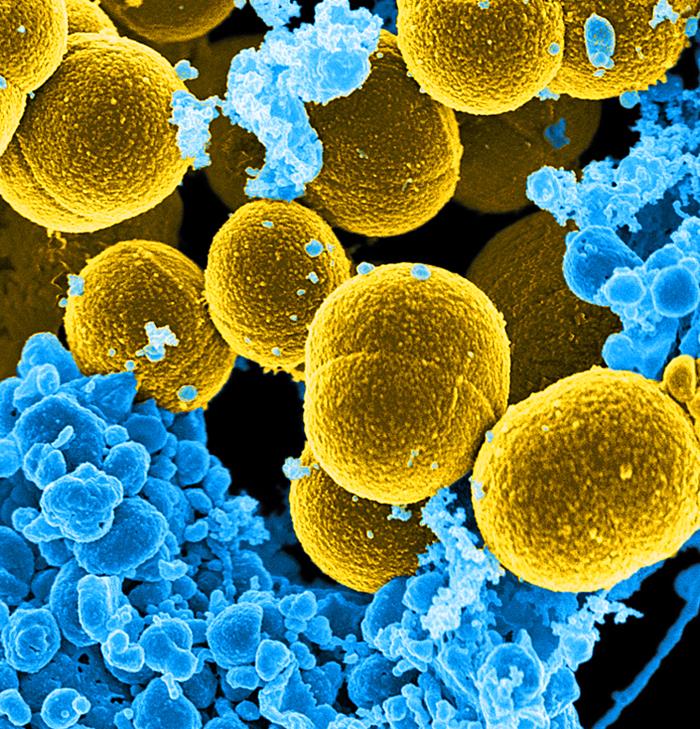Researchers at two prominent facilities continue the quest for newer and better treatment options for the drug resistant strain of Staphylococcus aureus (MRSA).

Researchers at Washington University School of Medicine in St. Louis have shown that a three-drug strategy of of antibiotics not known to be effective against MRSA were effective in the laboratory and predict that the combo could be effective in treating human infections.
The three drugs — meropenem, piperacillin and tazobactam — are from a class of antibiotics called beta-lactams that has not been effective against MRSA for decades.
“MRSA infections kill 11,000 people each year in the United States, and the pathogen is considered one of the world’s worst drug-resistant microbes,” said principal investigator Gautam Dantas, PhD, an associate professor of pathology and immunology. “Using the drug combination to treat people has the potential to begin quickly because all three antibiotics are approved by the FDA.”
Read more HERE
At Blacksburg, VA, Virginia Tech researchers have discovered a new group of antibiotics that may provide relief to some of the more than 2 million people in the United States affected with MRSA.
The discovery, published in Medicinal Chemistry Communications, shows that the potential new antibiotics are unlike contemporary antibiotics because they contain iridium, a silvery-white transition metal. New transition metal complexes do not easily breakdown, which is important for delivery of antibiotics to where they are needed to fight infections in the body.
Even though these compounds contain iridium, further testing by the researchers shows that they are nontoxic to animals and animal cells. Thus, they are likely safe for use in humans, according to the researchers.
“So far our findings show that these compounds are safer than other compounds made from transition metals,” said Joseph Merola, a professor of chemistry in the College of Science, a Fralin Life Science Institute affiliate, and a corresponding author of the study. “One of the reasons for this is that the compounds in this paper that target MRSA are very specific, meaning that a specific structure-function relationship must be met in order to kill the bacteria.”
Researchers showed the antibiotics effectively kill the bacteria without inhibiting mammalian cells. A version of the antibiotic was tested for toxicity in mice with no ill effects.
“We are still at the beginning of developing and testing these antibiotics but, so far, our preliminary results show a new group of antibiotics that are effective and safe,” said Joseph Falkinham, a professor of microbiology in the College of Science and an affiliate of theVirginia Tech Center for Drug Discovery. “Within the next few years, we hope to identify various characteristics of these antibiotics, such as their stability, their distribution and concentration in animal tissue, their penetration into white blood cells, and their metabolism in animals.”
Read more HERE


2 thoughts on “MRSA treatment research: Washington University in St. Louis and Virginia Tech”